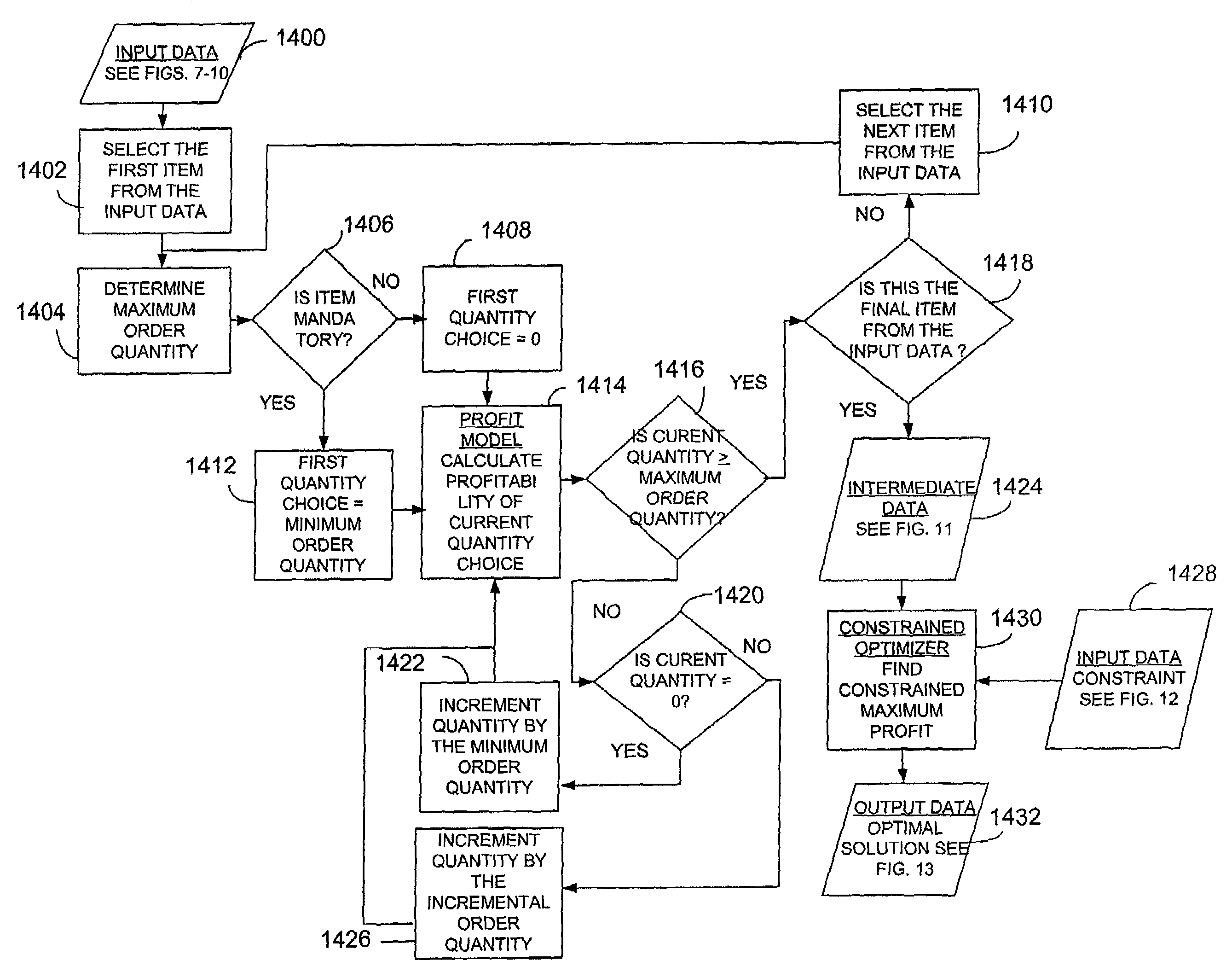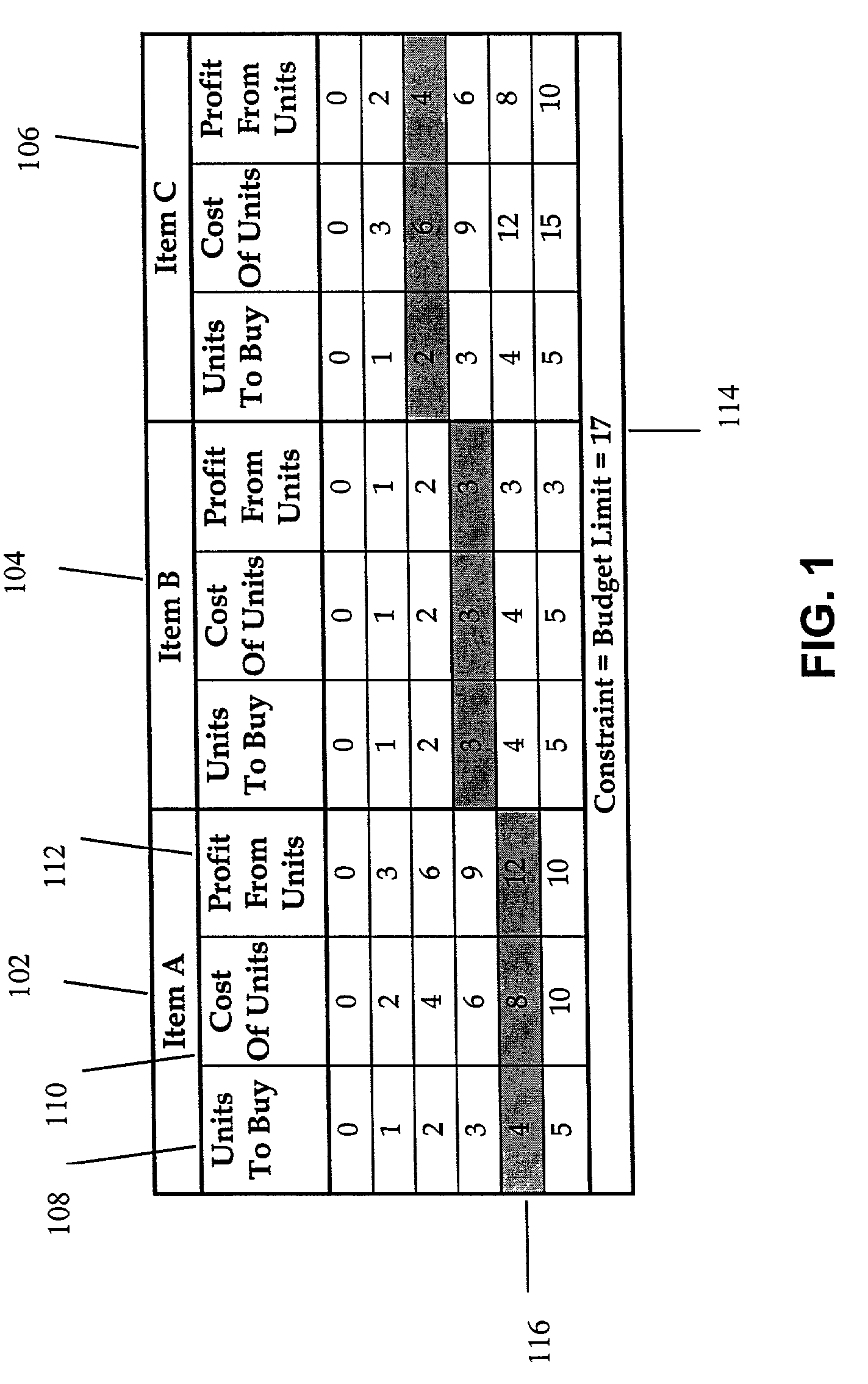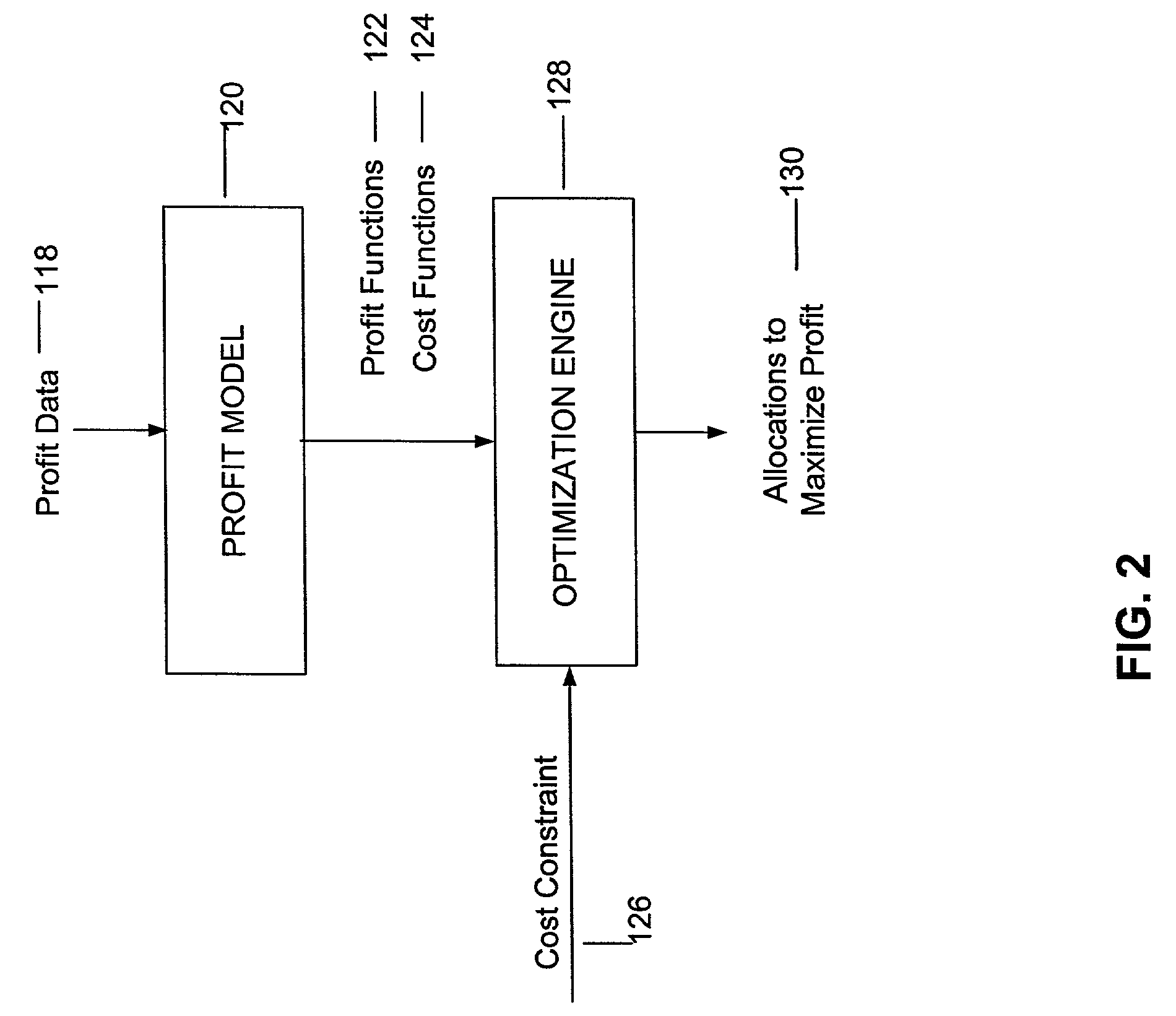Stochastic multiple choice knapsack assortment optimizer
a technology of stochastic multiple choice and optimizer, applied in the field of data processing, can solve the problems of large computational resources and time required to develop an acceptable solution, the difficulty of developing a highly efficient and cost effective system and method for solving hard combinatorial problems, and the inability to meet the requirements of data processing requirements, etc., to achieve the effect of maximizing profi
- Summary
- Abstract
- Description
- Claims
- Application Information
AI Technical Summary
Benefits of technology
Problems solved by technology
Method used
Image
Examples
example 1
[0103]Assume that one has three classes given as
N1={(0,0),(9,9)}, N2={(0,0),(3,3),(5,5)}, N3={(0,0),(1,1)},c=15 (3-20)
If one treats the classes as given, one will consider the capacities 0, . . . , 9 in the first iteration, capacities 0, . . . , 14 in the second, and capacities 0, . . . , 15 in the third iteration. This will in total demand 41 evaluations of (3-6). The weight spans are 9, 5 and 1 respectively, so if one treats the classes in reverse order, one will need to consider capacities 0, . . . , 1 in the first iteration, capacities 0, . . . , 6 in the second, and capacities 0, . . . , 15 in the third iteration. This will in total demand 25 evaluations of (3-6).
[0104](e) Dominance of items
[0105]A variant of the method uses dominance within each class to remove some of the items a-priori, thus improving the solution time of the algorithm.[0106]Definition 1 Assume that one is solving the MCKPE problem. If two items r and s in the same class Ni satisfy that
wir=wis and pir≧pis ...
PUM
 Login to View More
Login to View More Abstract
Description
Claims
Application Information
 Login to View More
Login to View More - R&D
- Intellectual Property
- Life Sciences
- Materials
- Tech Scout
- Unparalleled Data Quality
- Higher Quality Content
- 60% Fewer Hallucinations
Browse by: Latest US Patents, China's latest patents, Technical Efficacy Thesaurus, Application Domain, Technology Topic, Popular Technical Reports.
© 2025 PatSnap. All rights reserved.Legal|Privacy policy|Modern Slavery Act Transparency Statement|Sitemap|About US| Contact US: help@patsnap.com



